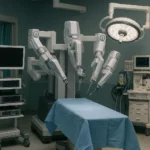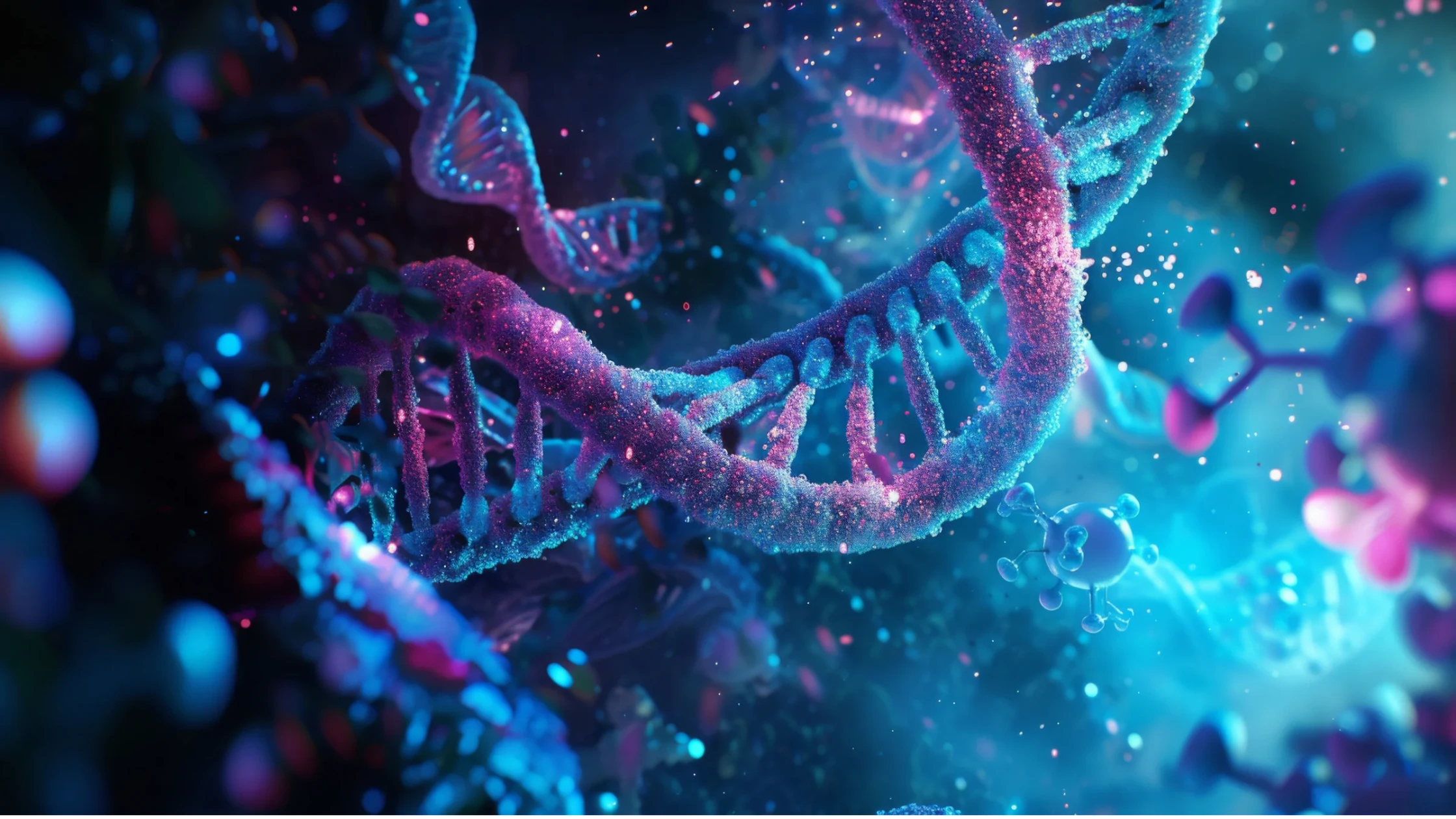Microscopic Robots Cancer Treatment in Nanomedicine

Imagine a world in which minuscule robots move through your bloodstream, precisely identifying and destroying cancer cells. Does not that sound like a science fiction tale? However, this futuristic vision is coming to pass thanks to developments in nanomedicine. Scientists and medical professionals are currently investigating the potential of Microscopic Robots Cancer Treatment to transform oncology. This new cancer treatment promises targeted treatment with fewer side effects than traditional therapies, which frequently damage both healthy and cancerous cells.
However, the key question still stands: can these small but effective instruments be used to cure cancer? Let’s explore precision medicine’s potential and how it might alter the way we treat cancer.
Nanomedicine: What is it?
A new field called “nanomedicine” uses nanotechnology to identify, track and treat illnesses at the molecular level. It entails the use of nanoparticles, nanosensors and other microscopic materials to improve imaging methods, improve drug delivery and develop patient-specific treatments.
Nanomedicine makes it possible for medications to reach tumor cells in novel cancer treatment strategies without harming healthy tissues. Precision medicine, the term for this degree of accuracy, is revolutionising oncology.
How Do Microscopic Robots Help Treat Cancer?
These minuscule robots, commonly known as nanobots, function inside the body to identify, target and eliminate cancer cells. However, how do they operate?
- Taking aim at tumors: It is possible to program nanobots to recognise cancerous cells and deliver therapeutic medications straight to them.
- Drug Delivery by Nanoparticles: They deliver medicine to tumors without harming the surrounding tissues by using liposomes (which are tiny drug carriers).
- Real-Time Monitoring: By using nanosensors, medical professionals can monitor the body’s reaction to treatment.
- Destroying Cancer Cells: Certain nanobots are made to stop a tumor’s blood supply (which causes the tumor to shrink or disappear).
This discovery guarantees that a novel cancer treatment will be more efficient and have fewer adverse effects than radiation and chemotherapy.
Advantages of Microscopic Robots in Cancer Treatment
Nanomedicine aims to redefine cancer treatment, not just reduce tumor size. Here is why it has so much potential:
- Increased Precision: Healthy cells are unaffected by nanobots’ detection and destruction of cancer cells.
- Decreased Side Effects: Nanoparticles lessen the side effects of traditional treatments, which frequently include fatigue, nausea and hair loss.
- Minimally Invasive: Nanomedicine reduces recovery time by acting at the cellular level in place of major surgeries.
- Tailored Care: Using nanosensors, physicians can tailor care to each patient’s particular condition.
Nanomedicine is one of the most promising new cancer treatment options on the market right now because of these advantages.
Challenges of Using Microscopic Robots in Cancer Treatment
Although nanotechnology appears to have a promising future in cancer treatment, there are still obstacles to overcome.
- Safety Concerns: Researchers need to make sure that tiny robots don’t cause immune system reactions.
- Nanotoxicology Risks: Research on the long-term impacts of nanoparticles on the body is ongoing.
- Expensive: Before this state-of-the-art technology is made widely accessible, a substantial investment is needed.
- Regulatory Obstacles: To guarantee the safe application of nanomedicine in clinical settings, governments must set rules.
Despite these challenges, scientists are optimistic that more research will improve this novel cancer treatment and make it safer for patients everywhere.
Latest Innovations in Microscopic Robots for Cancer Treatment
Medical organisations and biotech businesses are working hard to make nanotechnology a viable cancer treatment option. Among the latest innovations are:
- Gold Nanoparticles: Scientists are experimenting with microscopic gold nanoparticles that have the ability to heat up and kill tumors.
- Magnetic Nanobots: Researchers are creating minuscule robots that can navigate inside the body using magnetic fields.
- Smart Liposomes: Only when they identify malignant activity do these sophisticated liposome carriers release medication.
These developments imply that a cancer cure might not be as far off as we previously believed.
When can cancer patients expect to use nanomedicine?
- Nanomedicine is advancing rapidly – Scientists are working hard to bring it into real cancer treatments.
- Some experiments have already started, but it may take 5 to 10 more years before nanobots become widely available.
- Safety and effectiveness testing is crucial before they can be used for patients.
- Regulatory approvals, such as from the FDA, are required before these treatments reach the public.
- Ongoing research and investment are speeding up progress, bringing hope for a breakthrough in cancer treatment soon.
How Regimen Healthcare Connects You with the Best Cancer Treatment?
Our specialty at Regimen Healthcare is matching patients from around the world with top-notch medical facilities and cancer treatment facilities. Here is how we can assist:
- Tailored Consultation: Depending on your condition, we direct you to the best physicians and hospitals.
- Medical Visa Assistance: To guarantee a seamless travel experience, we assist with visa applications.
- Treatment Coordination: We set up consultations, therapies and health examinations.
- Reasonably priced packages: We provide economical medical solutions without sacrificing quality.
- Post-Treatment Care: We guarantee a smooth recovery and help with follow-up care.
Why is India a Top Destination for Cancer Treatment with Nanomedicine?
The following factors are making India a top cancer treatment destination:
- Advanced Medical Technology: India’s top hospitals employ state-of-the-art therapies, such as nanomedicine.
- Highly Qualified Physicians: Indian oncologists are known throughout the world for their proficiency.
- Reasonably priced treatment: Compared to Western nations, cancer treatment in India is substantially less expensive.
- Hospitals with International Accreditation: A large number of Indian hospitals hold JCI and NABH accreditation.
- Short Wait Times: Patients can see specialists and procedures quickly.
Conclusion:
It Is Possible to Have a Future Free of Cancer:
The idea of combating cancer with microscopic robots is quickly becoming a reality and is no longer just a sci-fi fantasy. Future cancer treatments could be less invasive and painful in addition to being more effective as nanomedicine develops. This technology has the potential to change the way cancer is treated because it provides precision-targeted therapies, reduces side effects, and brings revolutionary innovations.
Contact Regimen Healthcare for Skilled Cancer Treatment!
Regimen Healthcare is available to assist you or a loved one in need of cutting-edge cancer treatment. Get a free consultation with us right now to learn more about India’s top treatment choices!
📞 WhatsApp or Call: +91-9310356465
📧Email: [email protected]
🌍 Website: www.regimenhealthcare.com
FAQs
1. Is the use of microscopic robots in cancer treatment already underway?
Research and clinical trials are progressing quickly, but not yet for general use.
2. How safe are nanobots for the human body?
Before using nanotoxicology on a large scale, scientists are doing a lot of research to make sure it’s safe.
3. Does nanomedicine work better than chemotherapy?
Yes, since it reduces harm to healthy tissues by exclusively targeting cancer cells.
4. How much does it cost to treat cancer using nanomedicine?
Ongoing research has made it costly at present, but experts anticipate future price reductions.









